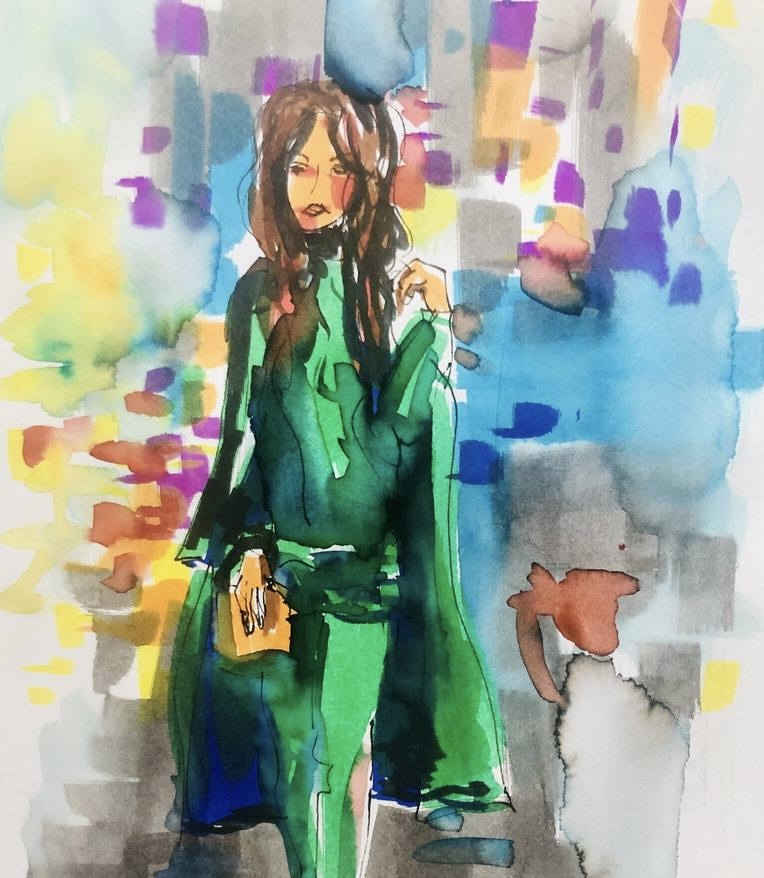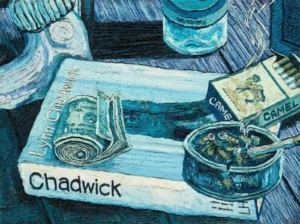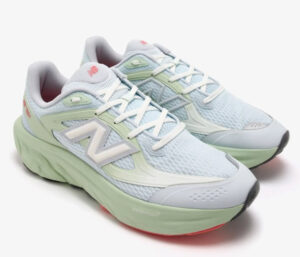Konrad Biro stands as a rare figure in the creative world—an individual who has not only made significant strides as an artist but has also achieved noteworthy success in the realm of sports. Known primarily for his abstract and expressionist works in painting and mixed media, Biro has demonstrated a level of creative versatility that few can rival. His background as an accomplished alpine skier, having won the prestigious Europa Cup overall title in 1988, adds an additional layer of intrigue to his already compelling story. This critical exploration seeks to examine Biro’s contributions to both the art and sports worlds, with a focus on his artistic style, thematic interests, and the broader cultural impact of his multifaceted career.
The Intersection of Art and Athletics
Before delving into Konrad Biro’s artistic oeuvre, it is essential to understand the broader context in which his dual pursuits—art and athletics—intersect. While these two fields might seem disparate, there is a natural synergy between them. Both require intense focus, discipline, and the capacity to push boundaries, albeit in different ways. For Biro, his achievements in alpine skiing likely informed the way he approaches his art, with both activities demanding a deep level of concentration, risk-taking, and the ability to react instinctively to the conditions at hand.
In alpine skiing, the athlete must navigate unpredictable terrain, moving with fluidity and precision through dynamic environments. This form of movement is, in some respects, echoed in Biro’s artwork, where abstract shapes and colors move across the canvas with a similarly unpredictable rhythm. There is an athleticism in his brushstrokes—often expressive, bold, and spontaneous—suggesting that his experience as a skier informs the way he engages with the physicality of creating art. Whether consciously or not, Biro’s experience on the slopes appears to translate into his creative process, making his art not just a visual experience, but a dynamic and kinetic one.
Abstract and Expressionist Influences
At the heart of Konrad Biro’s artistic identity is his commitment to abstraction and expressionism. These two movements, though distinct, share common ground in their focus on emotion, form, and the exploration of the subconscious. Biro’s abstract works frequently eschew traditional representational forms, instead opting for compositions that challenge the viewer’s perception and invite contemplation. His work often consists of complex arrangements of shapes and colors that interact with one another in surprising ways, creating a visual experience that is at once disorienting and compelling.
One of Biro’s most notable pieces, “Walk”, serves as a prime example of his abstract approach. The composition of this work is both striking and enigmatic, with vibrant colors and geometric shapes that appear to shift and move across the canvas. At first glance, *Walk* might seem like a chaotic assortment of forms, but upon closer inspection, there is a sense of harmony in the disarray. The colors—ranging from deep blues to warm oranges—appear to blend and bleed into one another, creating a sense of depth and movement. This movement is perhaps a reflection of Biro’s background in sports, where the body is constantly in motion, navigating and adapting to its surroundings. In *Walk*, the viewer is invited to navigate the visual landscape in much the same way.
What makes Biro’s abstract work particularly effective is its ability to evoke a wide range of emotions without relying on traditional subject matter. The shapes and colors in his paintings seem to have a life of their own, allowing viewers to project their own interpretations onto the canvas. This level of engagement is central to abstract art, and Biro’s works excel in this regard. Rather than offering clear narratives or easily identifiable subjects, Biro’s paintings serve as open-ended experiences, encouraging viewers to explore their own emotional responses to the compositions before them.
The Expressionist Ethos
While abstraction is a defining feature of Biro’s work, there are also clear influences from expressionism, particularly in the way he uses color and form to convey emotion. Expressionism as a movement is rooted in the desire to express subjective experiences rather than objective reality. Artists like Edvard Munch, Wassily Kandinsky, and Egon Schiele sought to communicate their inner emotional states through distorted forms, vivid colors, and dramatic compositions. In many ways, Biro’s work can be seen as a continuation of this tradition, with his paintings serving as a window into his own psychological landscape.
One of the hallmarks of Biro’s expressionist leanings is his use of bold, often contrasting colors to convey intensity and drama. In works like “Walk”, the viewer is immediately struck by the emotional weight of the composition. The vibrant colors seem to pulse with energy, creating a sense of tension that is palpable. This tension is a key characteristic of expressionism, where the goal is not to create a pleasing or harmonious image, but to evoke a powerful emotional response.
Biro’s brushwork also plays a crucial role in his expressionist approach. In many of his paintings, the brushstrokes are loose and gestural, suggesting a sense of spontaneity and immediacy. This method of painting aligns with the expressionist ethos, where the act of creation is as important as the final product. The viewer can almost sense the physicality of Biro’s process, as if the artist is pouring his emotions directly onto the canvas. This visceral quality is what makes his work so compelling—it feels raw, unfiltered, and deeply personal.
The Role of Mixed Media
In addition to painting, Konrad Biro has explored mixed media as a means of expanding his artistic practice. Mixed media allows for a level of experimentation that goes beyond the limitations of traditional painting, enabling the artist to combine various materials and techniques to create layered, textured works. Biro’s forays into mixed media are a testament to his willingness to push boundaries and explore new artistic possibilities.
By incorporating materials such as collage, fabric, and found objects into his compositions, Biro adds an additional layer of complexity to his works. These materials interact with the painted surface in ways that challenge the viewer’s expectations, creating a tactile experience that goes beyond the visual. In this way, Biro’s mixed media pieces invite viewers to engage with the work on multiple levels, encouraging them to consider not only the imagery but also the materials and techniques that went into its creation.
The use of mixed media also aligns with Biro’s broader interest in abstraction and expressionism. By layering different materials and textures, Biro is able to create compositions that are rich with meaning and open to interpretation. The juxtaposition of materials—whether it be the contrast between smooth paint and rough fabric or the combination of organic and geometric forms—creates a sense of tension that is central to Biro’s work. This tension, much like in his paintings, is not meant to be resolved but rather to be experienced and contemplated.
Konrad Biro in the Broader Art World
While Biro’s work is undoubtedly rooted in the traditions of abstraction and expressionism, his unique perspective sets him apart from other artists working in these genres. As a Hungarian artist, Biro’s cultural background plays an important role in shaping his artistic vision. Hungary has a rich history of modern art, with artists like László Moholy-Nagy, Victor Vasarely, and Lajos Kassák contributing to the development of avant-garde movements such as constructivism and op art. While Biro’s work does not fit neatly into any of these categories, it is clear that he is part of a broader lineage of Hungarian artists who have pushed the boundaries of contemporary art.
Biro’s international recognition, particularly through platforms like Saatchi Art and USEUM, further highlights the global appeal of his work. These platforms have provided Biro with the opportunity to showcase his art to a wide audience, enabling him to reach collectors and enthusiasts from around the world. The fact that his work has resonated with such a diverse range of viewers speaks to the universality of his artistic language. While his paintings are deeply personal, they also tap into broader themes of human experience, emotion, and the exploration of form.
The Legacy of an Artist and Athlete
Ultimately, what makes Konrad Biro such a fascinating figure is the way he has managed to excel in both art and athletics—two fields that require a rare combination of discipline, creativity, and resilience. His achievements in alpine skiing, including winning the Europa Cup overall title in 1988, demonstrate his ability to perform at the highest level in a highly competitive arena. Yet, rather than being defined by his athletic success, Biro has carved out a new identity as a talented artist, bringing the same level of passion and dedication to his creative practice.
In many ways, Biro’s dual career reflects the broader human experience of balancing multiple identities and interests. His work serves as a reminder that individuals are not confined to a single path or profession; rather, they can explore a wide range of passions and pursuits, each informing and enriching the other. For Biro, the worlds of art and athletics are not separate, but interconnected, with each offering new ways of understanding the other.
As Biro’s artistic career continues to evolve, there is no doubt that he will remain a dynamic force in the art world. His ability to push the boundaries of abstraction and expressionism, combined with his willingness to experiment with new materials and techniques, ensures that his work will continue to captivate and inspire. Whether on the canvas or on the slopes, Konrad Biro is a testament to the power of pursuing one’s passions and making a mark in multiple arenas.
No comments yet.








